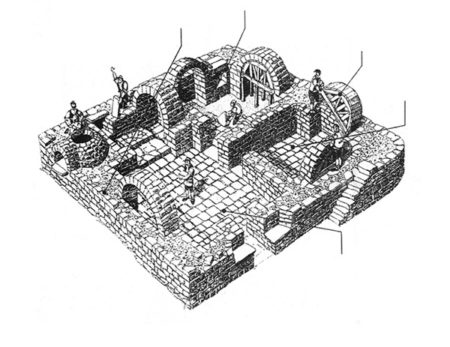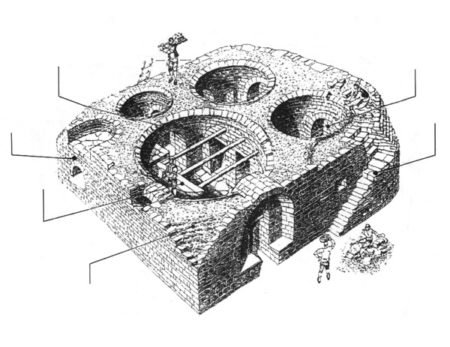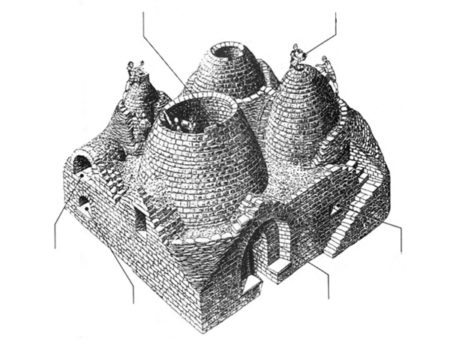Trulli were originally built without the use of mortar. Floors, walls, and roofs were crafted from the local limestone, which often lies just inches beneath the surface of the land.
ABOUT TRULLI
Structure of trulli
Except for doors and windows and occasionally lintels, the only wood used in trulli construction is the “tavolato”, a wooden floor laid upon hand-hewn beams and reached by ladder, which forms an attic space that was used for storage and sometimes as sleeping space.
Exterior walls are laid in square or circular plan and from the walls springs the most visually striking feature of the trulli, their cone-shaped roofs. These are created by laying concentric circles of stone, each circle slightly larger than the following one.
The horizontal friction between the carefully crafted and fitted stones, and the horizontal arch effect of each ring resisted the tendency of the roof to collapse inwards, thus allowing these massive roofs to be constructed without formwork.
The roof is covered with thin slabs of stone “shingles”, called “chiancarelle”. Elaborate guttering systems are built into the roof to carry the water away from the building or into cisterns beneath or nearby the trullo.
The symbols
Many trulli contains symbols white-washed onto the roof. The ancient inhabitants also decorated their houses with drawings with symbolic features linked to some rites that primitive peoples used to celebrate in the forest as a sign of good omen.
The origins of these, too, is shrouded in some mystery, though they have been the subject of academic study. There are various types of symbology: magic, pagan and Christian signs, monograms, acronyms, emblems.
Whether of magical, Christian, or purely decorative significance, these symbols were considered a part of the trullo and were periodically repainted.
A custom that continues today in many households.
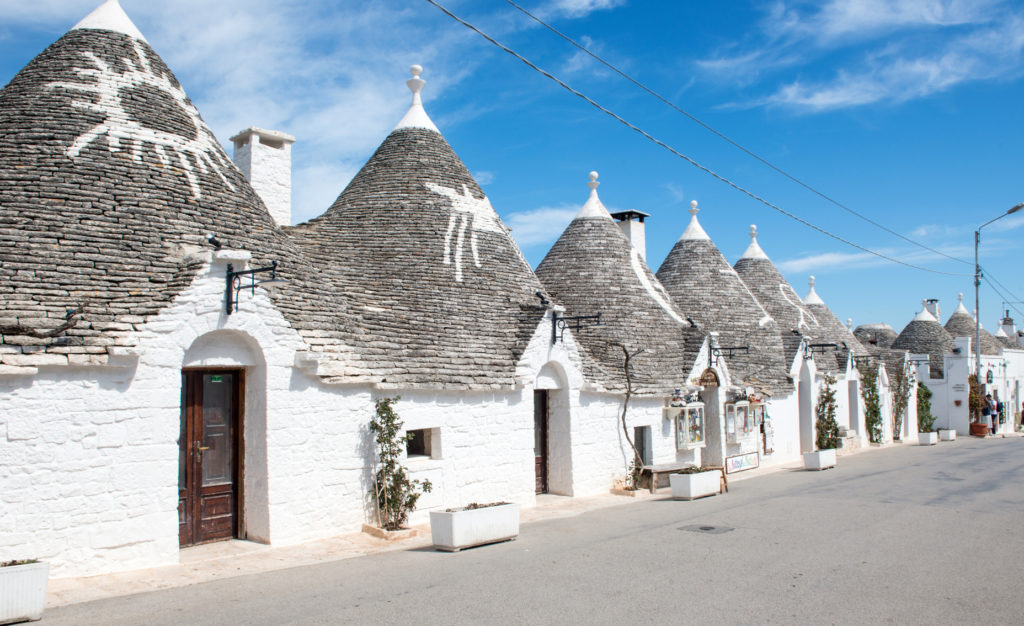
The stone pinnacles
At the top of each roof is a decorative stone pinnacle.
Some say their origins are drawn from ancient worship of the sun, which inspired people to imbed stones of odd shape, believing them to have fallen from the sun, in the walls of their buildings.
Others say these pinnacles are the “signature” of the master builder who created the trullo to distinguish it from those constructed by another. Still others say they are of purely ornamental function.
 TRULLIDEA s.n.c.
TRULLIDEA s.n.c.P. IVA 06413950723
Via Monte Sabotino, 10 - 70011 Alberobello (BA)
Phone Support
FROM 8:00 AM TO 9:00 PM+39 080 432 38 60
Mobile Support
CALL AFTER HOURS / WHATSAPP+39 324 95 12 967
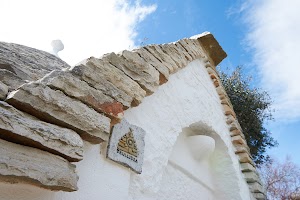
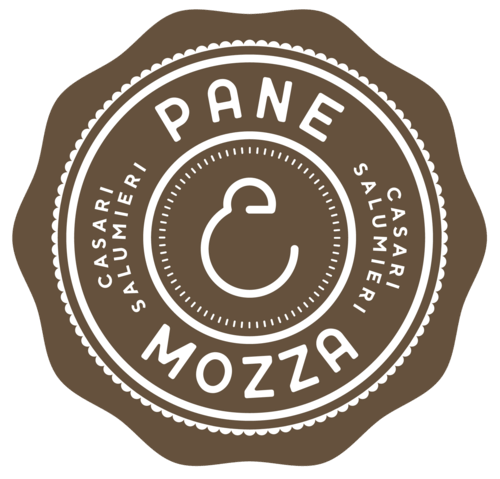
Copyright 2018 Trullidea s.n.c. - All rights reserved. | Privacy policy



